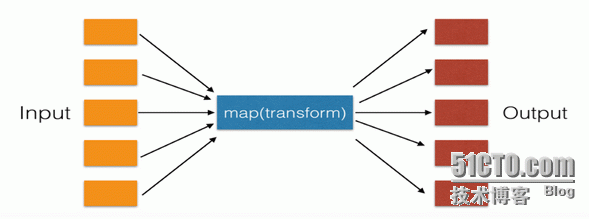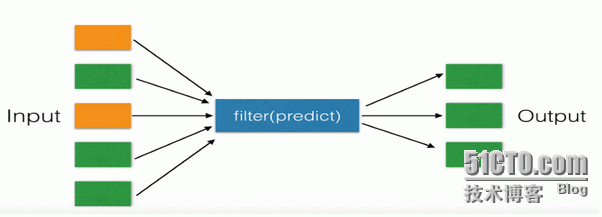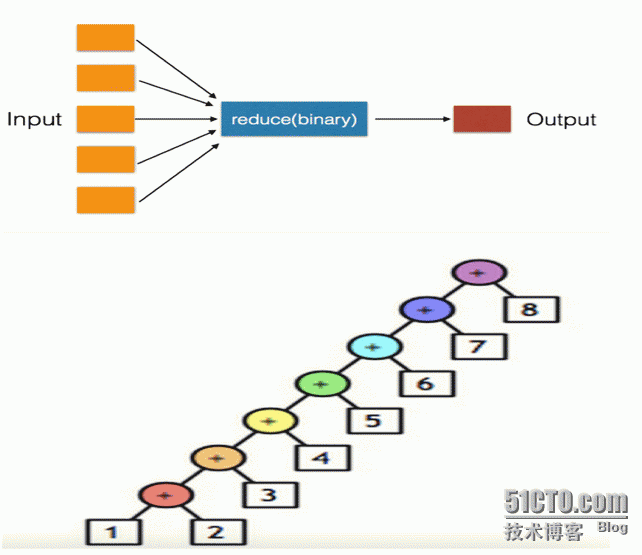python进阶 内置函数
内置函数:
一、map
对序列的每一个元素进行操作,最终获得操作后的新序列。

实例:
#!/usr/bin/env python # --*--coding:utf-8 --*-- li = [11, 22, 33] news = map(lambda a: a + 2, li) print news li = [22, 33, 44] l1 = [11, 22, 33] news = map(lambda a, b: a - b, li, l1) print news li = [11, 22, 33] news = map(lambda a: a * 2, li) print news li = [100, 2200, 3300] news = map(lambda a: a / 2, li) print news
实例输出结果:
[13, 24, 35] [11, 11, 11] [22, 44, 66] [50, 1100, 1650]
序列中的每一个元素经过操作,得出新的序列。两个序列相互操作必须元素相同,如果不同会造成多出的元素与None相互操作,出现错误。
#!/usr/bin/env python # --*--coding:utf-8 --*-- li = [22, 33, 44] l1 = [11, 22] news = map(lambda a, b: a + b, li, l1) print news
报错信息:
Traceback (most recent call last): File "D:/s11day2/s11day2/test/test.py", line 5, in <module> news = map(lambda a, b: a + b, li, l1) File "D:/s11day2/s11day2/test/test.py", line 5, in <lambda> news = map(lambda a, b: a + b, li, l1) TypeError: unsupported operand type(s) for +: 'int' and 'NoneType'
二、filter
筛选序列中符合的元素,把符合条件的元素组成一个新的序列。

实例:
#!/usr/bin/env python # --*--coding:utf-8 --*-- li = [22, 33, 44] l1 = [11, 22] news = map(lambda a, b: a + b, li, l1) print news#!/usr/bin/env python # --*--coding:utf-8 --*-- li = [22, 33, 44, 55, 66, 77, 88, 99] news_list = filter(lambda a: a > 66, li) print news_list li = [22, 33, 44, 55, 66, 77, 88, 99] news_list = filter(lambda a: a > 44 and a < 88 , li) print news_list
输出:
[77, 88, 99] [55, 66, 77]
三、reduce
对序列中的所有元素进行累加

实例:
#!/usr/bin/env python # --*--coding:utf-8 --*-- li = [22, 33, 44, 55, 66, 77, 88, 99] news_list = reduce(lambda a, b: a + b, li) print news_list li = [22, 33, 44, 55, 66, 77, 88, 99] news_list = reduce(lambda a, b: a - b, li) print news_list li = [22, 33, 44, 55, 66, 77, 88, 99] news_list = reduce(lambda a, b: a / b, li) print news_list li = [22, 33, 44, 55, 66, 77, 88, 99] news_list = reduce(lambda a, b: a * b, li) print news_list
输出结果:
484 -440 0 77786550737280
yield生成器
对比range和xrange的区别:
>>> print range(10) [0, 1, 2, 3, 4, 5, 6, 7, 8, 9] >>> print xrange(10) xrange(10)
range直接打印出来,而xange在需要的时候迭代循环才会打印出来,
yield是继续执行上次的操作,如下:
#!/usr/bin/env python # --*--coding:utf-8 --*-- def rmange(arg): seek = 0 while True: seek = seek + 1 if seek > arg: return else: yield seek for i in rmange(10): print i
第一步,从行到下执行函数(def rmange(arg):),第二步,执行for,第三步,调用上面的函数,进入while循环进行判断到yield,第二次for循环的时候直接不用调用def了,直接进入while循环。yiled就是继续执行上次的操作。可以使用上例进行调试测试。
装饰器
作用:具有特殊含义的函数,装饰函数或类。可以在函数执行前或者执行后添加相应的操作。
#!/usr/bin/env python # --*--coding:utf-8 --*-- def Before(request,kargs): print 'before' def After(request,kargs): print 'after' def Filter(before_func,after_func): def outer(main_func): def wrapper(request,kargs): before_result = before_func(request,kargs) if(before_result != None): return before_result; main_result = main_func(request,kargs) if(main_result != None): return main_result; after_result = after_func(request,kargs) if(after_result != None): return after_result; return wrapper return outer @Filter(Before, After) def Index(request,kargs): print 'index' if __name__ == '__main__': Index(1,2)
执行结果:
before index after
根据python运行规律,从上到下,应该是
before after index
冒泡算法
作用:根据简单的排序,临近的两个元素进行比较根据要求按顺序排列。
举例:
需求:请按照从小到大对列表 [13, 22, 6, 99, 11] 进行排序
思路:相邻两个值进行比较,将较大的值放在右侧,依次比较!
li = [13, 22, 6, 99, 11] for m in range(4): # 等价于 #for m in range(len(li)-1): if li[m]> li[m+1]: temp = li[m+1] li[m+1] = li[m] li[m] = temp
第二步
li = [13, 22, 6, 99, 11] for m in range(4): # 等价于 #for m in range(len(li)-1): if li[m]> li[m+1]: temp = li[m+1] li[m+1] = li[m] li[m] = temp for m in range(3): # 等价于 #for m in range(len(li)-2): if li[m]> li[m+1]: temp = li[m+1] li[m+1] = li[m] li[m] = temp for m in range(2): # 等价于 #for m in range(len(li)-3): if li[m]> li[m+1]: temp = li[m+1] li[m+1] = li[m] li[m] = temp for m in range(1): # 等价于 #for m in range(len(li)-4): if li[m]> li[m+1]: temp = li[m+1] li[m+1] = li[m] li[m] = temp print li
第三步
li = [13, 22, 6, 99, 11] for i in range(1,5): for m in range(len(li)-i): if li[m] > li[m+1]: temp = li[m+1] li[m+1] = li[m] li[m] = temp print li
输出结果:
[13, 22, 6, 99, 11] [13, 6, 22, 99, 11] [13, 6, 22, 11, 99] [6, 13, 22, 11, 99] [6, 13, 11, 22, 99] [6, 11, 13, 22, 99]
第一个是原值,后面是五次循环左右两个元素对比根据大小排序。
递归
程序分析:斐波那契数列(Fibonacci sequence),又称黄金分割数列,指的是这样一个数列:0、1、1、2、3、5、8、13、21、34、……。
在数学上,费波那契数列是以递归的方法来定义:
F0 = 0 (n=0) F1 = 1 (n=1) Fn = F[n-1]+ F[n-2](n=>2)
程序源代码:
方法一
#!/usr/bin/python # -*- coding: UTF-8 -*- def fib(n): a,b = 1,1 for i in range(n-1): a,b = b,a+b return a # 输出了第10个斐波那契数列 print fib(10)
方法二
#!/usr/bin/python # -*- coding: UTF-8 -*- # 使用递归 def fib(n): if n==1 or n==2: return 1 return fib(n-1)+fib(n-2) # 输出了第10个斐波那契数列 print fib(10)
以上实例输出了第10个斐波那契数列,结果为:
55
方法三
如果你需要输出指定个数的斐波那契数列,可以使用以下代码:
def fib(n): if n == 1: return [1] if n == 2: return [1, 1] fibs = [1, 1] for i in range(2, n): fibs.append(fibs[-1] + fibs[-2]) return fibs
# 输出前 10 个斐波那契数列
print fib(10)
以上程序运行输出结果为:
[1, 1, 2, 3, 5, 8, 13, 21, 34, 55]